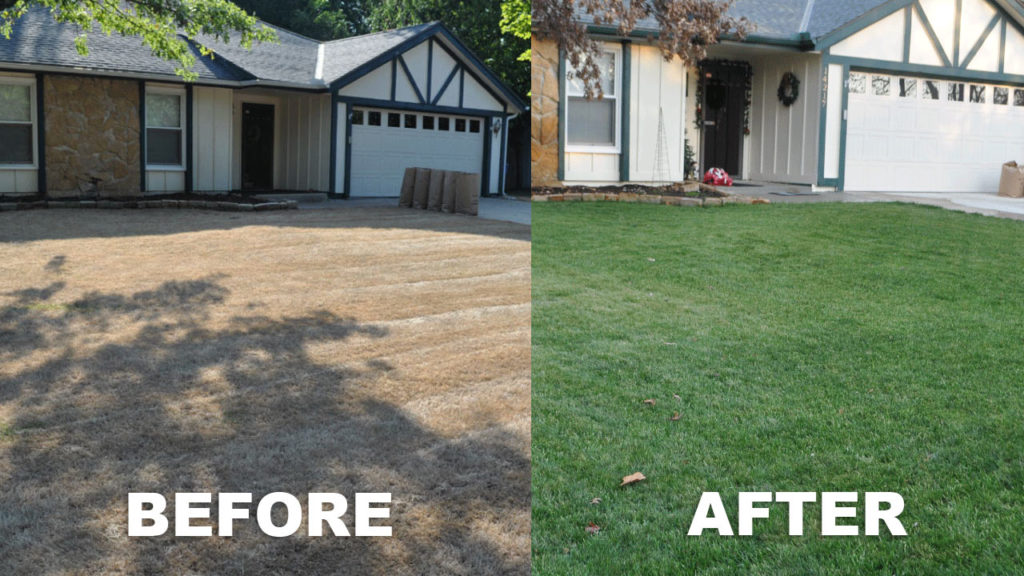
Is Your Grass Dead or Dormant?
The first step to greener grass is determining whether it is dead or dormant. In many northern states, the grass will go dormant when the heat of the summer rolls in and rain is sparse. Before you begin treating your yard, examine the crown of the grass. This is the whitish area at the base of the plant where the blades (emerge). If the crowns are green and alive, you simply need to water your grass more often. But if the crowns are brown, the crowns are brown and noticeable dry, water will not help you bring the grass back to its green glory. If your grass is healthy with only a few patches that are dead, you might be able to revive it on your own. However, if majority of your yard has succumbed to the conditions, you might need to call in the professionals.
Replacing Dead Patches of Grass
- Pull Weeds – Pull any weeds that have made your yard their home. You may also use a herbicide to rid your lawn of them.
- Dethatch Your Yard – This will allow air, water, and vital nutrients to circulate and make their way beneath the soil, promoting healthy growth.
- Till the Soil – You should till the areas between five and six inches deep. As you till, consider adding an organic compost as it can provide an additional source of nutrients. Organic compost may also break up clay and helps sandy soil retain water.
- Test Your Soil – Once you have tilled the soil, test to see if there’s enough phosphorus. Add a grass-starter fertilizer to help your new grass grow healthy and strong.
- Reseed or Sod – If you are planting your own grass, spread seed over the entire area and then cover with a thin layer of soil. Or if you have decided on sod, place the pieces firmly against the ground ensuring that the roots have made contact with the soil. You will want to stagger the pieces to keep them from rolling up.
Keeping Your Grass Alive
Now that you’ve revived your grass, there are a few steps to follow to keep it alive.
- Irrigate to Keep the Soil Moist – Watering your new grass is an important part of keeping it alive but you want to avoid watering it too much. Moist soil is great— soggy soil is not. As the grass reestablishes itself, you can water less frequently.
- Mow Once a Week – You will want to keep your grass a few inches long. Mowing it too short could be detrimental.
- Fertilize Monthly Through November – You will do this only during the first year. Beyond that, you should only fertilize your lawn once in the spring and once in the fall.
- Aerate and Dethatch Every Year or Two – This will allow vital nutrients to reach the soil.
- Keep Your Pets Off of the Lawn – Pets, such as dogs, have acidic urine that can kill your grass. If your yard is the only place for your pets to urinate, dilute the spot where they peed when they are done.
- Move Above Ground Pools and Play Equipment Routinely – This will balance out wear and allow your grass to grow evenly without one area taking the brunt of summer fun.
Need Some Help? Give A&A a Call!
A&A can help you with everything outside your doors! The following services will help you replace dead grass and keep it alive and thriving…
Contact Us (859-384-0266) for a Free Consultation!
Get an Instant Quote
—
 About A & A Lawn Care & Landscaping
About A & A Lawn Care & Landscaping
A & A Lawn Care & Landscaping can beautify your lawn and landscaping using our vast experience in turf grass management. Our complete lawn service is designed for both residential and commercial lawns and we keep your lawn healthy without harming your family, staff, or pets.


 About A & A Lawn Care & Landscaping
About A & A Lawn Care & Landscaping